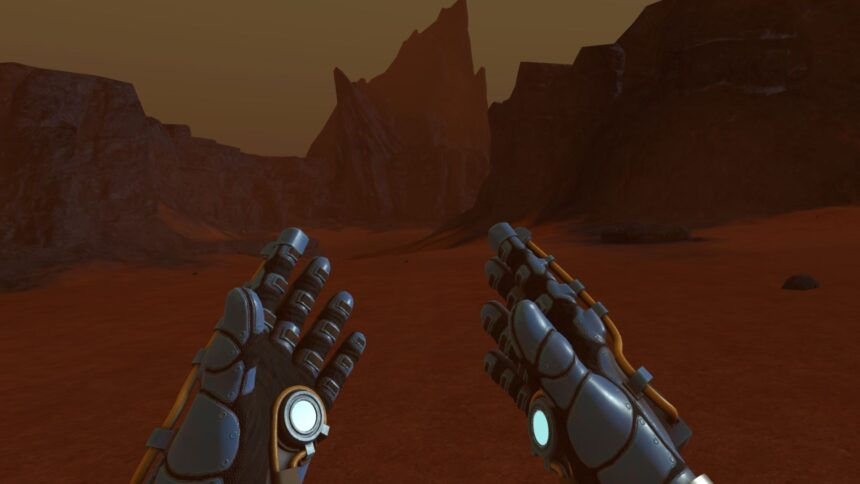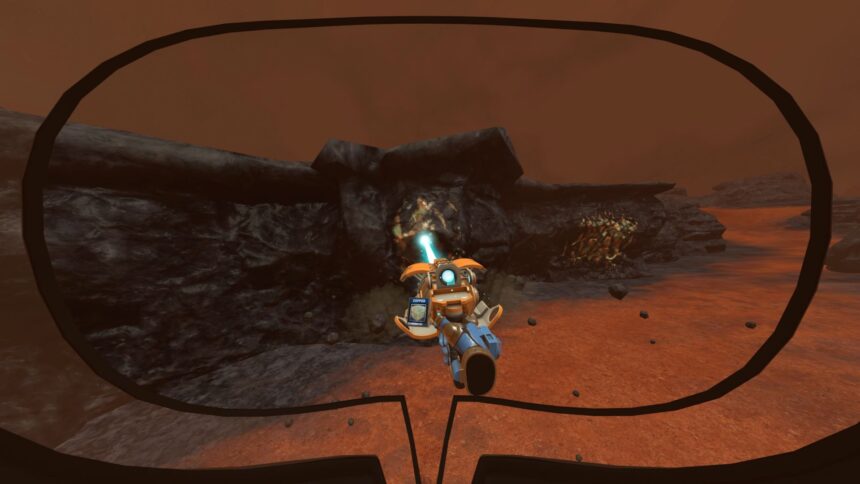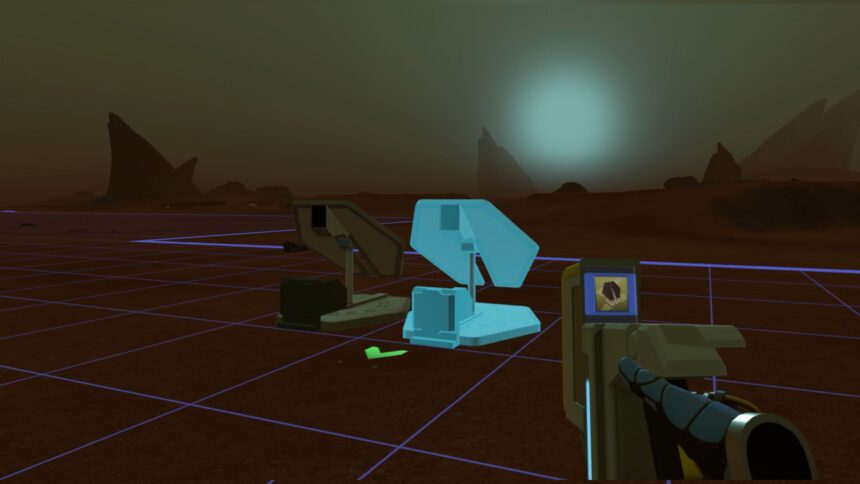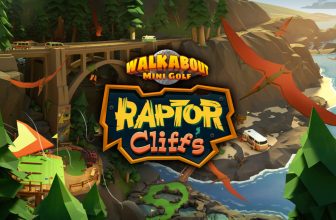
Surviving Mars Pioneer transforms the classic base-building strategy hit into a survival game for virtual reality. We took the Meta Quest version for a spin.
Surviving Mars first landed on PC back in 2018, and over the years it’s built up a loyal following — more than 15,000 Steam reviews rate the base-building strategy game “very positive.” Now, seven years after launch, publisher Paradox is teaming up with Impact Inked and Bolverk Games to bring the title into VR, but with a few significant changes. Instead of the classic top-down view of domes and Martian sand, you’re now dropped right into the action, seeing the world through a first-person perspective.
I spent some time with the Quest version to see how Surviving Mars holds up in virtual reality.
From base-building to survival sim
Where Surviving Mars on PC has you directing units from above in a familiar isometric view — maintaining a constant overview and micromanaging your facilities — in VR, all of that changes.
In the VR edition, you step into the boots of a lone Mars colonist, experiencing everything from ground level. What started as a straightforward base-building game now veers sharply into survival territory.
Going solo on Mars
Things kick off in the thick of a landing sequence, gazing through your spaceship’s cockpit at the Red Planet while an AI voice rattles off mission prep. The setup: previous colonies have failed, anomalies are piling up, and you’re being sent to Mars to establish a self-sustaining outpost and investigate — alone.

Now it’s time to get my hands dirty. I’m a one-man mission on Mars. | Image: Paradox Interactive
After touchdown, you suit up in your cramped lander. In the closet next to your spacesuit, you find three tools you’ll be living with: a scanner, an extractor, and a constructor. It’s here I hit my first real snag — like with so many VR games, I try to just grab the tools, but nothing happens.
Awkward controls break immersion
Instead of simply reaching out, you have to point a laser at the item and a little “interact” panel pops up. The game expects you to hold the trigger, drag an arrow onto a symbol, and release — but it never actually explains this. Instead, you’re greeted with a grating beep if you do it wrong.
Even picking up basic cube-shaped items from storage means pointing, holding, and dragging your laser pointer to a symbol. Doors? Same process. Pretty much every interaction is mediated by an awkward panel you have to aim at.
You do get used to it after some time, but this kind of control scheme is a major immersion killer in VR.
Inventory management works smoother. Pressing the X button brings up a floating box with 16 slots for your cube-shaped items. Need to refill oxygen? Drag the right cube to your left wrist and slot it into your watch. Ready to eat? Just shove a food cube straight to your mouth.
Eat, craft, build, repeat
Your inventory also comes stocked with blueprints for habitats, chests, and power systems — all, naturally, in cube form. Your handy in-game watch shows the time (yes, there’s a day/night cycle), hunger, and oxygen levels.

At my workbench, I produce blueprints for buildings in practical cube form in exchange for resources. | Image: Paradox Interactive
Keep an eye on those last two — let either hit zero, and it’s game over. My first task: build an outpost with a working power supply. So, it’s out the door and into the Martian wilderness.
Outside, a barren red desert stretches in every direction. It’s bleak, but there’s a stark beauty to it. As I trek further, the horizon slowly reveals more rocks and terrain features. A glimmering pit catches my eye, and I head straight for it.
Jetpacking across Mars
Just as I’m wishing for a Mars rover — movement is entirely artificial locomotion here, with no teleport or vignette options — I accidentally tap the left trigger and fire up the jetpack. Walking is instantly obsolete. Now I’m blasting across the landscape at ridiculous speed, and honestly, it’s a blast.

The extractor helps me to mine important resources from the Martian rocks. | Image: Paradox Interactive
That shimmering pit? Turns out it’s a resource deposit. I mine ice, iron, and copper by pointing my extractor at color-coded rocks. Building comes next, courtesy of the Constructor.
Switching tools is a matter of holding the A button and moving your hand between virtual panels. Hold the extractor beam on a resource long enough, and it zaps straight into your inventory — just don’t overdo it, or the tool will overheat and burn you.
With resources in hand, I set about building my outpost — workbenches, storage crates, and a generator for power. Keeping the base supplied with electricity means building wind turbines and generators, then connecting everything up with cables.

A glowing grid shows me where I can place my buildings. | Image: Paradox Interactive
Snapping pipes and building parts together isn’t hard once you get the hang of it. Grab the right blueprint from your generator (again, as a cube), take it outside, and place it. The Constructor tool lets you freely position and rotate structures — rotation is key, since some parts only fit together one way. When I get low on oxygen, I duck back into my Mars cabin, catch my breath, and head out again. Nobody builds a colony in a day.
Surviving Mars VR: Promising, but clunky
My first sessions with Surviving Mars VR were dominated by wrestling with the controls, which never felt truly natural. Dragging a laser pointer over menu tiles and icons quickly gets old. Still, once you adapt, the core building and survival gameplay is satisfying.
The bleak Martian terrain, paired with some atmospheric audio, creates a surprisingly immersive vibe. Visually, the Quest 3 version holds its own — just don’t go in expecting a graphical showcase like Red Matter 2.
If you’re into construction and survival games, Surviving Mars Pioneer is worth checking out. If the loop of gathering, mining, eating, refilling oxygen, building, and moving ever forward sounds tedious, you may want to steer clear of the Red Planet.
Surviving Mars Pioneer is now available in the Meta Horizon Store and on Steam as an Early Access version for just under $20.
Fancy a fight for survival on Mars? Share your opinion in the comments below.







